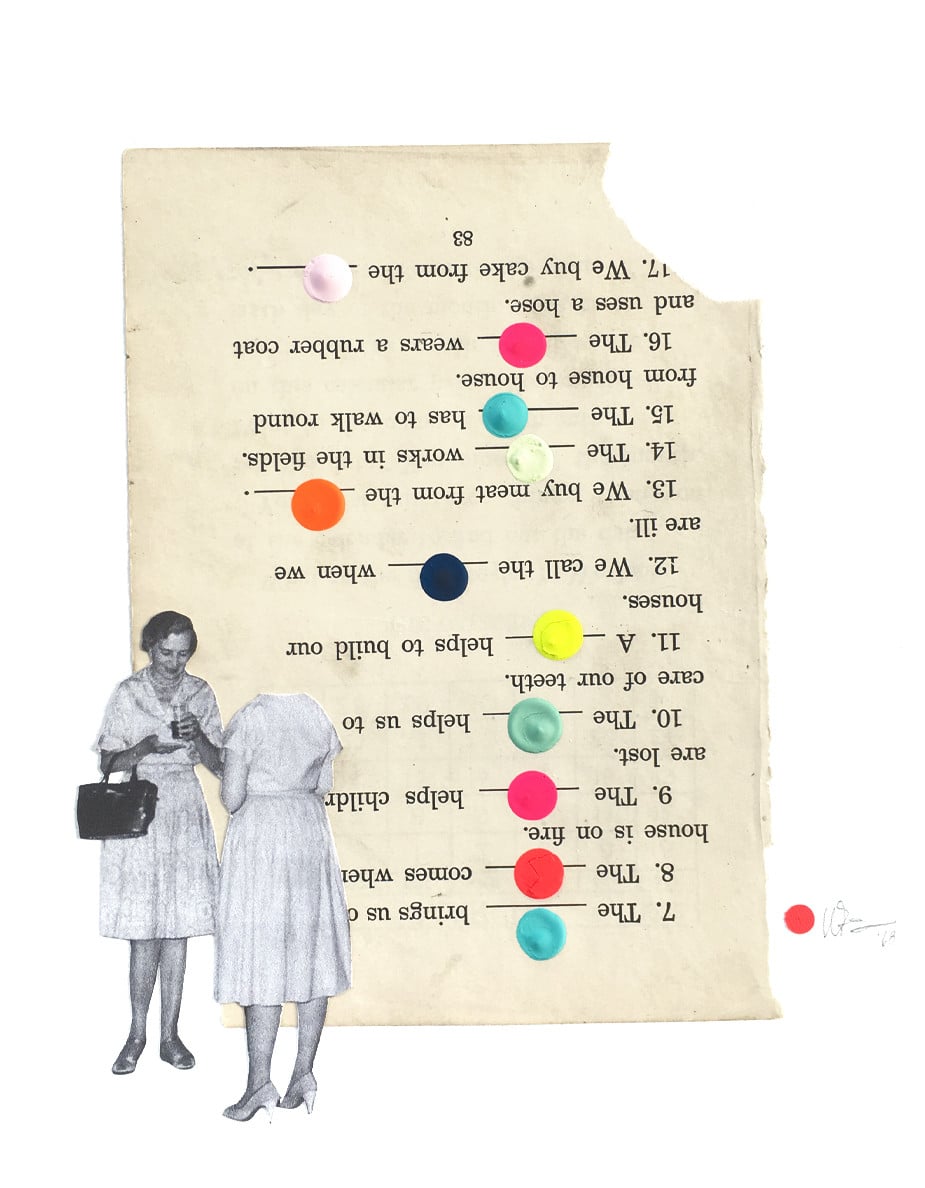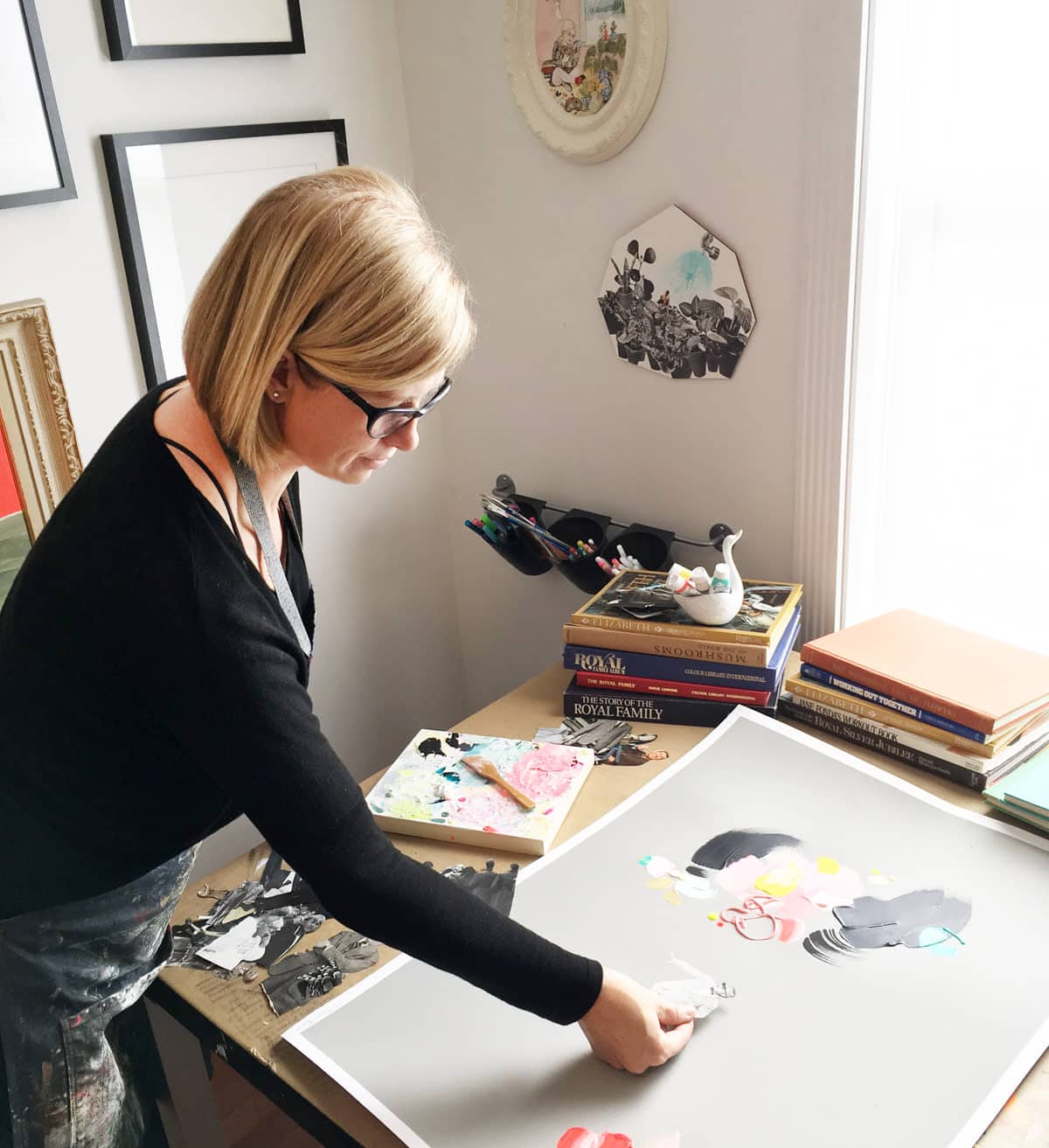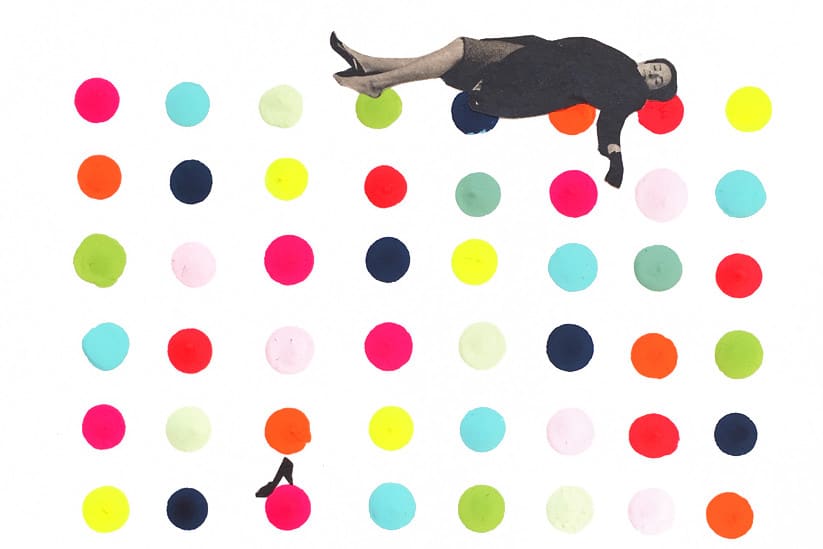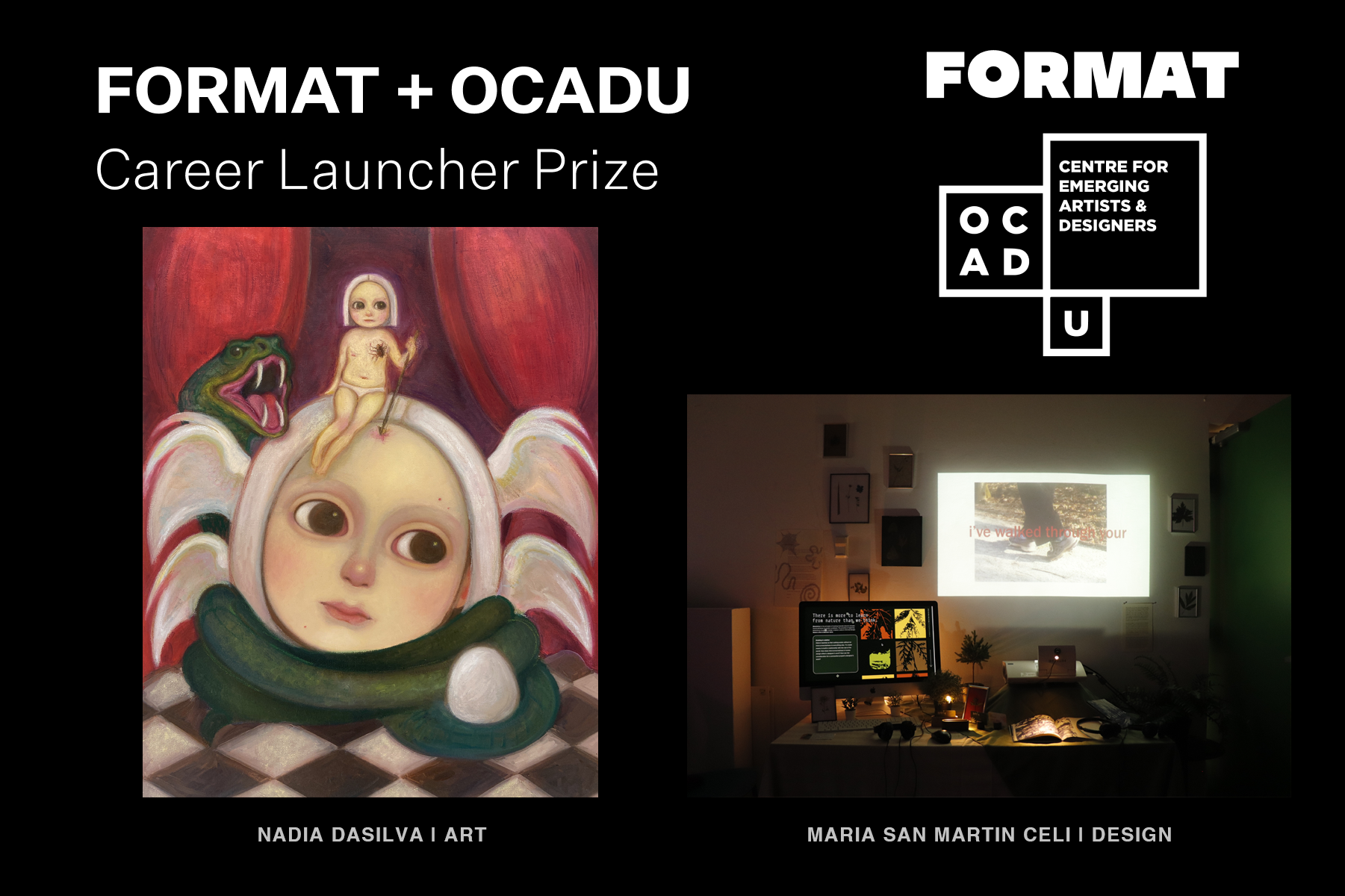Who hasn’t procrastinated in the face of a looming deadline? Graphic designers, photographers, illustrators, writers—for a lot of us, avoiding the studio is all too easy. “The light in here is terrible.” “This paper isn’t quite right.” “That idea isn’t perfect yet.” “This is a waste of time.” Sometime the excuses come easier than the work. Canadian writer, curator, and artist Danielle Krysa knows what this is like—she used to tell herself those exact same excuses.
Tired of watching other artists achieve what she wanted, Krysa stopped making excuses and launched her own blog The Jealous Curator in 2009. The site started off as a way to document, write about, and share the work of other creators she admired. It now features a wide variety of artwork and hundreds of images to pore over, and has become an invaluable source of inspiration for the hundreds of creatives who read it daily.
Krysa has since published two books dedicated to overcoming creative difficulties: Your Inner Critic Is A Big Jerk, and Creative Block, which features 50 interviews with artists and their personal tips for becoming “unstuck.” She has spoken at TEDx on the same subject, and now produces Art For Your Ear, a podcast with artists discussing their work habits and practices.
We caught up with Krysa to find out how she stays inspired, what artwork makes her jealous, and her advice for those procrastinators among us.
Format Magazine: Hi Danielle! First up, what is it about a piece of work that makes you ‘jealous’?
Danielle Krysa: Well, I should start by saying that I’m not “jealous” anymore. Before I started the blog in 2009, I was very jealous of so many artists. But almost as soon as I started writing about them every day—in a positive way—I was able to turn that jealousy into inspiration. Thank goodness! The work that I write about always takes my breath away in a “Oh, I wish I’d made that” kind of way. The work runs the gamut, but there’s always something about it that gets my heart racing and my personal creative fires burning.
Do you notice any similarities across the work that you feature on The Jealous Curator?
A few things that always catch my eye are humor and wit, pop culture references, narratives, portraits, weird and interesting materials, and bold use of negative space. That’s a pretty long unrelated list, but those seem to be the themes that come up over and over again. Oh, and pink. I really love every shade of pink.
Where do you go to discover new art or artists?
I used to use Pinterest and other blogs, and then I’d just allow myself to fall down the rabbit hole that is the internet—which still does happen from time to time—but now I get over 100 submissions per day, which is fantastic! I can pour my morning coffee and then just sort through an inbox filled with gorgeous contemporary art. Not bad!
For those artists who want to get their work out there, what’s the best way to get on your radar?
Having a really strong Instagram feed is always a good idea. Oh, and making sure your work is photographed or scanned beautifully is a must. If your work looks great, it’s much easier for bloggers, magazines, etcetera, to feature you. The best way to get on my radar though… submissions@thejealouscurator.com

Danielle Krysa, *a seasoned gallery-goer, betty’s trick to understanding contemporary art was indulging in the free drinks,* 2017. 8 x 10 in. Found images and gouache on watercolor paper.
Can we talk a bit about the idea “Comparison is the thief of joy”? After viewing so many impressive artworks and interviewing such great artists, how do you manage not to compare yourself to it all when making your own work?
This was actually my problem before I started the blog. When I clicked around online, I’d always find artwork I loved, and instantly compared myself. This was actually a huge reason for starting the blog—I wanted to keep a visual record of all the work I really loved to see if I could figure out a pattern. My own work changed every single time I found an artist I liked, which was frustrating and ridiculous.
I remember very clearly, about two months into writing the blog, I was looking for a post for the next day. I went to the website of a gallery in New York that I really liked, in search of greatness. They represented about 100 artists, and I went through all of them… and I didn’t find any that gave me that “punch to the creative gut” I wanted to feel. None of them. But they’re all repped by a gallery in New York! I instantly felt a huge sense of relief. It made me realize that there is a place for everyone; you just have to be true to the kind of work you want to make and then do the legwork to find “your place.”After that I was able to start focusing on the elements I was continually attracted to and consciously started bringing those elements into my own work. It took years, but I just kept plugging away until I got to a place that felt like me.
What drew you to collage? What do you love most about it?
I think I’ve probably always done it. Even during my painting undergrad, I used to cut up the canvas and then put it back together. After my BFA I went to design school, and then worked as a designer in the advertising and branding world for years. I think collage and design are pretty connected. Again, it’s those narratives, pop culture references, and lots of negative space. Also, I can’t draw to save my life! Thank goodness for found images.
Do you have a most “successful” piece of work, or any pieces that surprised you with the way they turned out?
At this stage, I’m always happy with how they turn out. Otherwise they’re in the recycle bin! Lately I’ve been using a lot more paint, and just letting happy accidents happen. It’s really fun, and for the first time in years I’m really enjoying painting. Weird, since for years I’ve always joked that “you can’t spell painting without P-A-I-N.”
I would love to know more about the different “creative un-block projects” mentioned by the artists in your book Creative Block. What are some of the best, most memorable, or most surprising methods you learned?
Oh, there are so many good ones. The artists in this book are creative geniuses and I’m so grateful for all of the projects they suggested! There are two unblocking projects that have really helped me the most, so I’ll share them here:
“Make a drawing in black and white and then photocopy the drawing 50 times on cardstock (or enough copies so that you won’t “worry” about how many you’ve used…).
Then, ‘alter’ the image in as many different ways as you can think of with colored pencils, paint, whatever. You can modify this idea and change it in whatever way you like but the important thing is to turn off your brain and just play with a repeated form and let your mind see where no ideas or thought process takes you.
Create your own tight parameters… then give yourself a LOT of room to play. Have fun.” — Trey Speegle, New York
“When I am in a creative rut this simple activity always helps me to get excited. Start with a stack of white or off-white papers. Sometimes I use scraps or sometimes I take large pieces of drawing paper and cut them into pieces around 8×10 inches. Then get out your watercolors, acrylics or other paint and mix up some of your favorite colors. Paint the surface of the papers. Sometimes just seeing all the lovely colors together on the papers inspires me. Once the painted papers have dried, get some scissors or an x-acto knife and cut out some shapes. They can be totally arbitrary or recognizable as objects, animals, faces, etc.
Open your sketchbook or get a blank sheet of paper and start arranging shapes. Just play with the shapes and colors, layering until you see interesting combinations. You can start gluing them down in your paper or book, painting on top of them, or just save the pieces you like. I keep envelopes around full of colored pieces for loosening up when I am stuck. Working with these painted shapes helps me see things that I may not see just drawing or painting directly because my mind wanders and there are always a lot of surprises.” — Kate Pugsley, Chicago
… and there are 48 more in the book!
Aside from having to deal with the inner critic, artists also receive a lot of outside criticism, and often comments from strangers, or the general public, that can be quite confrontational. How do you, personally, deal with this type of criticism? Do you listen to it?
That’s really hard. Some artists have mastered the whole “taking criticism with a grain of salt” thing simply by considering the source. If it’s someone you actually respect then perhaps you’ll want to consider what they’re saying. If it’s an internet troll with nothing better to do, then you should hit delete and move on.
I’m getting better at dealing with criticism… Okay, who am I kidding, I hate it! Everyone hates it! What I’ve been attempting to do for the past five years or so, though, is to only share work that I’m not ready to show the entire world with a few trusted art friends. I consider what they tell me as “feedback,” not “criticism”. They don’t sugarcoat anything, but they’re also not rude. When they suggest changes and ideasI leave the conversation feeling excited and ready to head back into the studio, not demoralized, frustrated and ready to give up on ever making art again. I mentioned that I really hate negative criticism, right?

Danielle Krysa in her studio.
In your TED talk, you mentioned the different ways you justify your own procrastination—I think it’s something we are all guilty of doing. What are some of the most entertaining excuses you’ve heard other artists (or yourself) make? And how did you stop yourself using them?
The funniest excuses from other people always, always involve cats. Apparently cats sit on a lot of art supplies, and apparently it’s impossible to move them? Oh, the other one I really like is “my Nespresso is out of pods.” Ha! My big excuse always seems to revolve around light. Yes. Sometimes my studio is too bright and sunny, and other times it’s a bit too dark. There’s about a five hour window of perfection in the middle there, so as long as the Nespresso is stocked up and there aren’t any cats around, well, I’m good to go!
I love this Isabel Allende quote “Show up, show up, show up, and after a while the muse shows up, too.” It makes me think that half of work is just having that routine and forcing yourself to be in the studio. What is your routine? How do you make sure you spend time in the studio?
Yes, I could not agree with that more. I actually schedule chunks of time for everything in my life, and then stick to it. If I have blocked off time from noon till five (the good light hours) in my studio, then that’s where I am. I don’t check email, I don’t write posts, I don’t work on my books, I don’t clean up the kitchen.
I do the same for everything on that list. If it’s book writing morning, I don’t stress out that I’m not in the studio because that’s not what this chunk of time has been assigned to. If I don’t break my days or weeks up like this then I feel totally scattered and that I’m not giving proper attention to anything. Because I’m not.
I have a set of Brian Eno’s Oblique Strategies, and love the idea of them, I just never actually use them! What would be some really really simple and practical methods that lazy people like me can use to help spark creativity?
My go-to tip for this is Instagram. You’ve got your phone with you 24/7, right? I know you do. So, I usually suggest people do a 30 day project, and all you have to do is one photo a day! It makes you very creatively present each day, and helps you notice things you might’ve just walked right past otherwise. But where to start? No problem, I’ll give you a list and then all you have to do is grab your phone. You’re welcome. This list is from Chapter 8 in my book, Your Inner Critic Is A Big Jerk.
- water
- circle
- texture
- fly
- five
- new
- upside down
- horizon
- open
- vintage
- blue
- mirror
- cold
- lines
- noisy
- boat
- pattern
- fur
- bright
- sweetness
- balance
- old
- intersection
- peak
- grow
- red
- twins
- simple
- delicious
- twilight
Read more on productivity and creativity:
15 TED Talks on Creativity to Hype Yourself Up
8 Graphic Design Projects to Cure Your Creative Block
11 Ways to Battle Creative Block—And Get Back to Work












